|
It is an absolute joy to live in the valley regions of Western Oregon during the winter. Temperatures are relatively mild and we typically don't experience anything too extreme, with some exceptions (the occasional ice storm). Winter is the perfect time to reflect on the successful and not so successful garden trials of the previous year, while also looking ahead to the new year with restless excitement. One of our favorite projects to work on during winter is selecting and purchasing the seed varieties we want to grow in the new season. We have put together a list of our favorite seed companies for Oregon and PNW gardeners so you can browse these catalogs and hopefully find something that excites you!
We hope you take the time to explore what these companies have to offer. We choose only the highest quality companies who have a passion for diversity, quality, reliability, and a commitment to the industry. We have separated our list into local seed companies if you want to shop as local as possible, as well as national seed companies who also encompass the aforementioned qualities. Happy seed hunting! National Seed Companies
Botanical Interests | Colorado
True Leaf Market | Utah
Eden Brothers | North Carolina
Local Seed Companies
Territorial Seed Company | Cottage Grove, Oregon
Adaptive Seeds | Sweet Home, Oregon
Uprising Seeds | Bellingham, Washington
Siskiyou Seeds | Williams, Oregon
Strictly Medicinal Seeds | Williams, Oregon
0 Comments
Starting seeds indoors is not only an enjoyable and rewarding activity, there are many benefits that can bring you more success to your gardening endeavors.
If you don't have the luxury of owning a heated greenhouse, or a very warm and sunny room, there are steps you can take to grow plants in almost any room, shop, or garage. In this blog post we will explore all of the aspects involved in successfully starting your seedlings indoors so you can get a jump on the season and choose plant varieties that interest you. Selecting Seeds
The first step to starting seedlings indoors is obtaining high quality seeds. Browsing seed catalogs and selecting interesting varieties to try is one of the most enjoyable parts of this whole process. The trick is to select companies that produce high quality seed and varieties that will perform well in your climate. Here in NW Oregon we have short but hot summers bookended by cold and wet spring and fall seasons. Picking out your own seeds allows you to plan and time your plantings based on the seasonal conditions of your area. We recommend several great seed companies in our blog: "Choosing the best seed companies for Oregon and PNW gardens"
What do plants need to grow?
At a very basic level, there are three key inputs your plants need to grow - water, nutrients, and light. Keep in mind that these are the bare minimum requirements that plants need to grow, but we don't want our plants to just grow - we want our plants to thrive! We will also discuss the importance of air circulation, soil, temperature, and acclimation.
Water
Seeds need adequate moisture for germination, but once germination occurs you will want to limit your watering to only when the plants absolutely need it. Over-watering is one of the most common mistakes people make when taking care of new seedlings. Over-watering can lead to fungal and bacterial disease that can kill young seedlings before they even have a chance to grow. To germinate your seeds use a spray bottle to mist the soil to keep it adequately moist, or use a mist setting on a hose nozzle if you are starting your seedlings in a place where you can water with a hose. You can also use a germination dome to help keep moisture in until the seedlings have sprouted:
Light
Good quality light is one of the most important pieces of the puzzle when starting your plants indoors. Not all lights are created equal and not all of them emit the quality and intensity needed for strong healthy growth. A sunny window will definitely grow plants, but chances are there is not enough sun coming through for a long enough period of time to avoid seedlings that stretch and become leggy - this is where supplemental lighting comes in. Lighting technology has come a long way, and whether you are an advocate for legalized marijuana or not the fact is that the marijuana industry is responsible for most of the advances in lighting technology. Using grow lights in the past meant hanging big bulky lights and ballasts that would produce a dangerous amount of heat, which required proper ventilation. Today we have very safe, effective, and affordable lighting in the form of LED grow lights. LED lights are quiet, they produce very minimal heat, and they use less energy than the traditional grow lights of the past. We use the following lights and highly recommend them:
Nutrients
Nutrients are the essential building blocks to strong healthy growth. Just as we need a balanced diet to maintain health and growth, plants also need the same. There are countless brands of fertilizer out there, which can make the process of selecting the right one for your needs a little daunting. For starting seedlings you will want to choose a liquid fertilizer so you can water your seedlings with a nutrient solution in a watering can. For an in-depth discussion about choosing the right nutrients for your plants please read our dedicated blog post here: How to choose the best organic fertilizer for your garden
Air Circulation
Often overlooked, air circulation is incredibly important for strong plant growth and disease prevention. Plants that are grown indoors are not subject to the harsher conditions outdoors, including winds. Plants develop an overall stronger structure in response to wind to prevent breakage. You can think of it as building a strong musculoskeletal system. If plants are not subjected to these conditions they will grow weaker structures and be more prone to breaking when you put them outside into the garden. A constant steady breeze on your plants, created by a table top or box fan, will mimic the natural processes and will result in healthier plants. Another reason air circulation is important is to prevent fungal and bacterial diseases. Fungus and bacteria both thrive in warm and moist environments, so giving your plants good airflow will help mitigate some of these issues.
Soil
Soil is not just an important consideration in the garden, it is also essential to have a good healthy soil to start your seedlings with as well. Most seedling mixes include a combination of peat moss, aged forest products, perlite, and a nutrient blend (depending on the brand of soil). We do not recommend using a brand like Miracle Grow for your seedling soil. Plants are much more resilient if they are grown in a natural soil mix that includes additives like bat guano, mycorrhizal fungi, and beneficial bacteria. We highly recommend Fox Farm brand soils to produce healthy plants. They have two great products to choose from for starting seedlings - Happy Frog Potting Soil and Ocean Forest Potting Soil. If you live locally you can find FoxFarm products in garden centers including Linnton Feed. If you don't have a FoxFarm retailer nearby you can find the soil online:
Temperature
It is important to understand the germination temperature of your seeds in order to have success. Most vegetable seeds undergo germination between the temperatures of 70 to 80 degrees. Flower seeds can sometimes have very specific temperature requirements, which will usually be provided to you on the seed packet or on the website of your seed source. If you are growing plants in an unheated shop or garage, the germination temperature can be achieved by using a seedling heat mat. Heat mats warm the soil from below your seed tray and provide your seeds with the optimal temperature for growth. We recommend the following seedling heat mat for germination purposes:
Acclimation
One of the most important steps in the process of starting your own seedlings is the final step - acclimation. Acclimation is the process of allowing your transplants to adjust to outdoor conditions slowly to avoid damage from sun exposure and temperature. Even if your plants are grown under bright LED lights, they will still need to be slowly acclimated to the harsh UV rays of the sun. You can achieve this by gradually introducing your seedlings to sunlight over time. When you are ready to bring your plants outdoors, it is important to give them indirect sunlight at first. This can be achieved by putting them in an area that gets dappled sunlight, like under a large tree. If you are growing seedlings on a large scale you can also purchase a shade cloth to provide partial shade to your seedlings as they adjust to being outside. We recommend using a 50% shade cloth for hardening off seedlings:
Another aspect of acclimation is temperature adjustment, which can be acheived by hardening off your seedlings. If your plants have been growing at a perfect 70 degrees under zero adverse conditions, they're going to be very lush and susceptible to damage. Hardening them off in the partial shade where they are receiving normal temperature swings will strengthen the plants and get them ready for their final spot in the garden.
For best results, harden off your seedlings in partial shade for at least a week before planting them in the garden. Conclusion
Now that you have a basic understanding of what is needed to start plants indoors we hope you find some interesting seeds and give it a shot! This blog post covers the absolute basics, so please feel free to contact us if you have more in-depth questions - we would be happy to help!
We understand that starting seeds indoors is not something that everyone has the time or resources to do. If you live locally we have plants available for purchase in St. Helens, Oregon, at the Real Deahl Gift Store during the season. We hope you stop by and see what interesting plants we have to offer. Happy growing! Corey & Susie
Choosing the best organic fertilizer for your garden can be time consuming when comparing different brands and formulations. Not all fertilizers are created equal and not all of them are designed for the same applications. In this blog we will explore some of the different types of organic and natural fertilizers and explain how each of them will benefit your garden. Before we can compare different fertilizers though, we must first discuss the various aspects of fertility and how plants utilize nutrients in the soil.
Why choose organic/natural fertilizer?
To begin, lets take a look at why we choose organic/natural fertilizers versus synthetic or conventional fertilizers:
Understanding the fertilizer label
Understanding the label analysis on the fertilizer packaging is the most important aspect of choosing a product, whether you choose organic or not. The analysis will always include the big three macronutrients: N-P-K. The analysis will always be displayed by percentage, which is percentage of ingredient by weight. For example, if you have a 50lb bag of fertilizer with 4% nitrogen then your total amount of nitrogen in the bag would be 2lbs. 50lbs x .04% = 2lbs
Nitrogen (N): Nitrogen is usually the most limiting nutrient in any soil as it is used by plants for lush green growth and is the nutrient that leaches most easily. Nitrogen is critical for all plants, but is most critical for plants where dark green leafy growth is the main goal: turf, salad greens, onions, cabbage, herbs, etc
Phosphorus (P): Phosphorus is used by plants for healthy root development and flower/fruit development. Having plenty of available phosphorus is beneficial to all plants, but especially those that you want to flower and/or produce fruits. Potassium (K): Potassium is critical to overall plant health as it serves many functions related to the plants ability to deal with stress. Potassium ions help regulate water balance and the opening and closing of the stomata, which are both crucial for drought tolerance and overall plant turgidity. Potassium also plays a key role in nutrient uptake and protein synthesis. Other macronutrients and the importance of soil pH The big three nutrients (N-P-K) are definitely the main components of any plant nutrition regimen, but they only make up a part of the equation - there are several other macronutrients that are essential to plant health as well. Most of these macronutrients are found naturally in healthy garden soil, but sometimes their availability is limited because of soil pH. Adding compost to your soil is the best way to regulate and buffer soil pH. Sulfur: Helps with the development of enzymes, vitamins, amino acids, and chlorophyll. Calcium: Important for cell wall structure and transport of other nutrients Magnesium: Essential for photosynthesis and chlorophyll production Availability of plant nutrients at different pH levels:
As you can see from the chart above, not all of the nutrients in the soil are available in the same capacity at different pH levels. The pH level at which most plants thrive and which most nutrients are available is between 6.0 and 6.5. There are definitely exceptions to this rule so knowing the needs of your plants is essential.
It is highly recommended that you get your soil tested, especially for pH, so you have an idea of what might be lacking in your soil. You can send in soil samples to your local university or extension office if you would like an in-depth analysis of your soil. You can also purchase pH meters if you would like to get a rough idea more quickly. Arbico Organics is a great company that offers many helpful products and resources for healthy soil. They offer a complete soil test for $60, or you can buy pH meters from them as well if you would like to test the pH yourself:
Micronutrients
In addition to the macronutrients, there are several trace elements needed for good plant growth. If your soil has a good balance of organic compost and fertilizers, you will rarely run into deficiencies with these nutrients in your garden, except for maybe iron (which is usually caused by a pH imbalance not an iron deficiency). The micronutrients include: boron (B), chlorine (Cl), copper (Cu), iron (Fe), manganese (Mn), molybdenum (Mo), and zinc (Zn) These trace minerals are more important when starting seedlings or growing plants in containers and can be supplied by using a quality all-purpose fertilizer. Other Essential Components
The nutrient makeup of your fertilizer is definitely important, but the availability of these nutrients increases when used in combination with other organic components such as beneficial fungi, beneficial bacteria, and soil activators.
Beneficial Fungi
Plants form many symbiotic relationships in the soil that are essential to their health and survival. Using natural fertilizers and amendments is not just about being eco-friendly, it is also about providing your plants with a soil environment that is alive and one that they have evolved to thrive in. It is said that mycorrhizal fungi form associations with the roots of approximately 90% of all plant species. Why then have many gardeners not even heard about this important component to plant health? The green "revolution", which started in the 1950's, set in motion a shift in the way the majority of farmers approached plant production. Farming has since become more about stripping the land of all life using pesticides, fungicides, and herbicides, in order to plant into a sterile environment. Once the crops are planted into the sterile environment they are fed with synthetic fertilizer salts, which produces an end result very quickly. Whether this is morally or ecologically responsible is a debate for another day, but the fact of the matter is that this is not a natural environment for plant growth. Here at Hildaberry Farm we believe in a natural approach because we believe it produces more nutrient dense food while also contributing to the long-term health of the soil and all of the organisms that live in the soil. So what exactly are mycorrhizal fungi? Mycorrhizal fungi are a group of soil fungi that form symbiotic relationships with the roots of plants. In this relationship the plant will provide the fungus with sugars from photosynthesis, in return the fungus will supply the plant with water and nutrients through the mycelium. The mycelium is like the root system of the fungus, but it is much smaller than a plant root so it can extend further into the soil and capture more water and nutrients because of the larger surface area. There are two types of mycorrhizal associations: endo and ecto. Most plants form an endomycorrhizal association at the roots. This is where the fungus will actually penetrate the root of the plant and attach to the root cells within the root. An ectomycorrhizal association is where the fungus will attach by forming a sheath over the outside of the plant root tip. Ectomycorrhizal association occurs in woody plants species, like plants in the rose family, which is incredibly important if you are starting an orchard. You can purchase mycorrhizal fungi to apply to your plants at the time of transplant in order to ensure a good colonization on your plant roots. I highly recommend Wildroot Organics products. I have known David and Teresa Steinbrunner for several years and they are wonderful people to work with. They offer mycorrhizae powder that you can mix with water and apply to the roots of your plants. Click the logo below if you are interested in their product. They are a husband and wife team so you will be supporting a small family run business!
Beneficial Bacteria
There has been a lot of research focused on beneficial bacteria in recent years. It has been suggested that beneficial bacteria in the gut of humans plays a major role in mental health and mood. You have probably heard a lot about probiotics lately, including Greek yogurt, fermented vegetables, kombucha, and more. Just as beneficial bacteria are good for the gut of humans, they also play an important role in the health of the soil. Yes, your soil needs probiotics too! Bacteria work in the soil to break down organic compounds and make the nutrients in the rhizosphere (area around the roots in the soil) more available for plant root uptake. A soil that is rich in beneficial bacteria will feed your plants continuously through the action of releasing locked nutrients. There are also a group of bacteria which form a symbiotic relationship with plant roots in the form of nitrogen-fixing nodules. As we pointed out earlier in this blog post, nitrogen is the most limited nutrient in the soil and is important for healthy green growth of plants. Most of the nitrogen available on earth is in the form of nitrogen gas in the air. Nitrogen-fixing bacteria convert the nitrogen in the air into a form of nitrogen that plants can use, and in return the bacteria feed off of the plant sugars in the roots from photosynthesis. It is important to understand that one group of plants, legumes, are especially well-adapted to form this symbiotic relationship. If you are planting beans, peas, lentils, soybeans, or any other legume, you will benefit from inoculating your seed with nitrogen-fixing bacteria to increase your yields. You can buy nitrogen-fixing bacteria inoculate at one of my favorite places to shop for supplies, Arbico Organics:
Increasing the amount of beneficial bacteria in your soil is as easy as adding well-aged compost. Compost is one of the most important soil amendments for natural/organic gardening. You can also purchase fertilizers and soil additives with beneficial bacteria colonies added to them. There are products which are designed to increase microbial activity in your soil and compost pile and you can purchase high quality ones at Arbico Organics:
Humates
Humates are naturally found in any soil that is high in organic matter. Humates are formed through the decomposition of organic matter and are made up of humic and fulvic acid, which both play a role in healthy plant growth. Humates improve soil structure, feed beneficial soil microbes, reduce enviromental stress on your plants, and make nutrients more bioavailable so your plants can utilize them. Adding compost and worm castings to your soil will naturally improve the humate content over time. You can also use products that contain high quality humates to get quick results if your soil is lacking organic matter in the present:
Kelp/Seaweed
Kelp and seaweed contain over 70 proteins, vitamins, enzymes, and minerals, making them excellent candidates for boosting the overall health of your plants. Kelp and seaweed alone won't provide all of the nutrition your plants need for sustained growth, but using them will help to establish healthy roots and provide your plants with the durability to withstand environmental stress. We use liquid seaweed to feed our seedlings in-between feeding them with their all-purpose fertilizer. It is especially beneficial to use these products when transplanting seedlings to help lessen transplant shock. Our recommended sources of kelp and seaweed include:
Choosing an organic fertilizer
Now that we have discussed the fundamentals that make up quality plant nutrition it's time to use this information to select a good quality fertilizer for your plants. As a general rule of thumb you will want to use a good all-purpose fertilizer that contains all or most of the components discussed above. The exception to the rule would be if you are trying to provide a more focused nutrient regime for a specific need of a certain plant.
Here is a list of our favorite fertilizers along with information about why/how we use each of them: Granular Fertilizers Granular fertilizers come in granular form (as the name implies) and will provide your plants with a slow release of nutrients throughout the growing cycle. These fertilizers can be incorporated into the soil at the time of planting, top dressed around your plants after planting, or mixed in with your potting soil for container grown plants. #1 Microlife Multi-Purpose (6-2-4)
#2 Microlife Acidifier (6-2-4)
#3 Down to Earth Bio-Live (5-4-2)
#4 EcoMax Neem Kernel Vegan Fertilizer (6-2-1)
Liquid Fertilizers
Liquid fertilizers are ideal for giving your plants a quick boost of nutrients when they need it. Using a fertilizer in liquid form is perfect for watering plants in 6-packs or containers, or when watering plants in the field that need a mid-season boost.
#1 Microlife Ocean Harvest (4-2-3)
#2 Down to Earth Liquid All Purpose (4-1-3)
Conclusion
We hope you learned something new and valuable from this blog post so you can make informed decisions when purchasing a good quality fertilizer for your garden. This information is just the tip of the iceberg, so if you have specific questions about your situation please feel free to email us and we would be happy to help you out if we can. If you would like to locate products locally you can usually find these brands, or brands with comparable ingredients, at your local feed stores or nurseries. If purchasing online is your only option we highly recommend Arbico Organics for all of your natural fertilizer needs. Feeding your soil and your plants is not as simple as buying a bag of Miracle Grow. You will be eating the fruits and vegetables from your garden so feeding them what they need to grow as healthy as possible will benefit you in the end. Healthy soils feed healthy plants. Healthy plants feed healthy people. Healthy people are happy people! Happy gardening.
Authored by Corey Wahl |
AuthorsHildaberry Permaculture blog is authored by owners Corey Wahl and Susie Stopa. We are located in Oregon and are proud to share our experiences as we build our small permaculture and regenerative agriculture farm. ArchivesCategories |
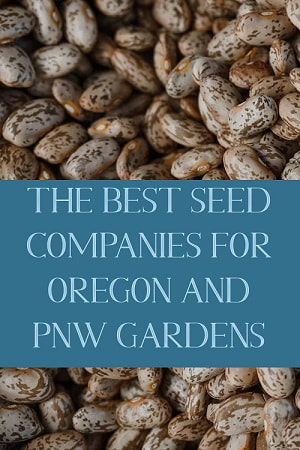
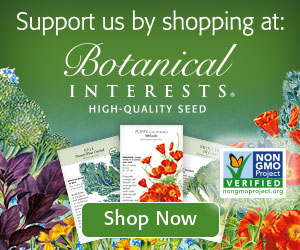
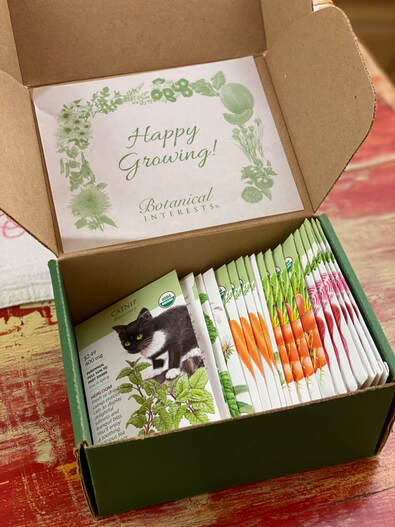
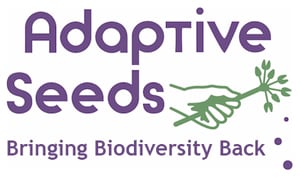


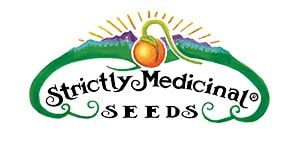
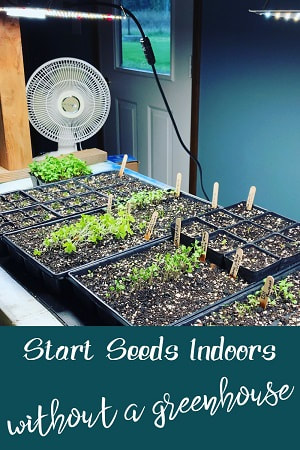
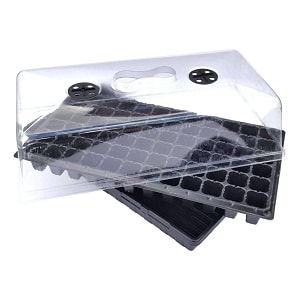
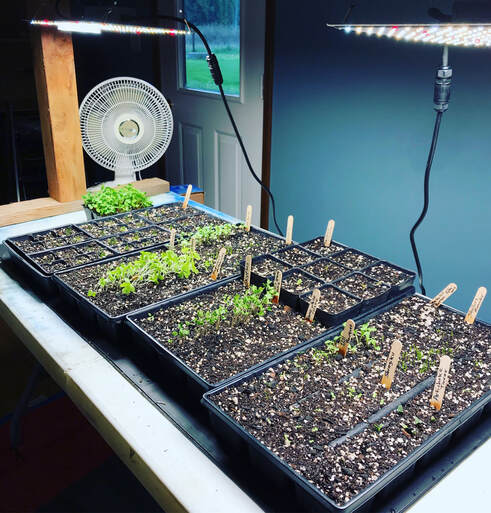




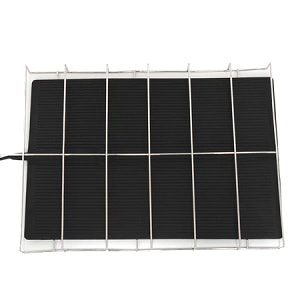
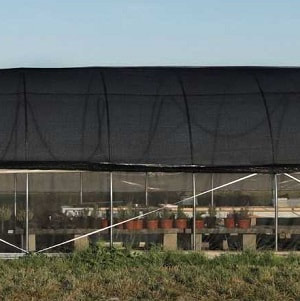
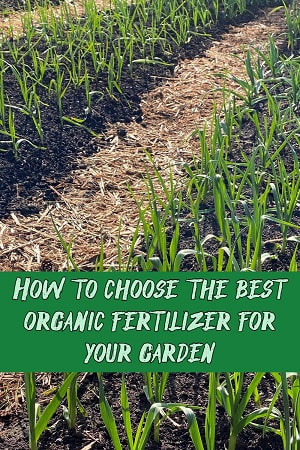
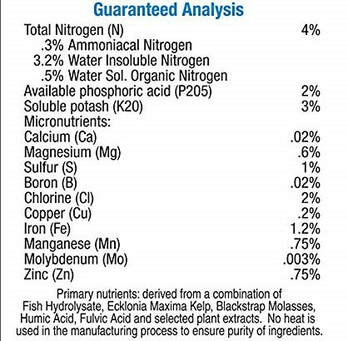
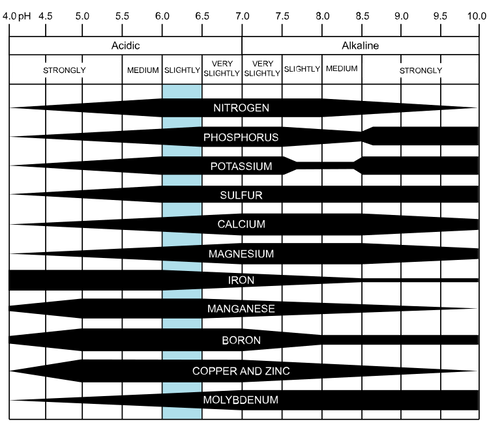
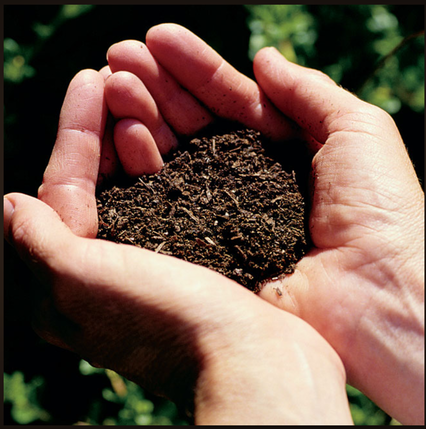
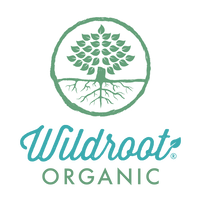
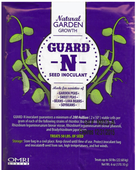
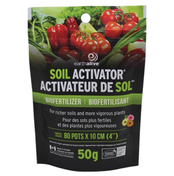
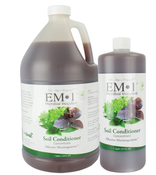
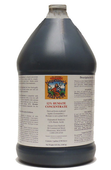
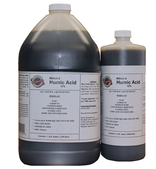
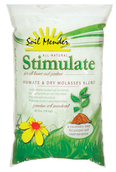
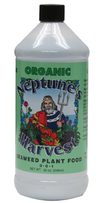
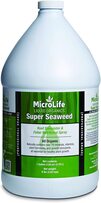
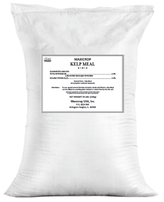
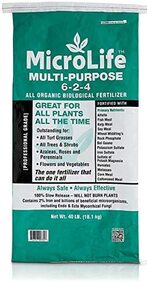
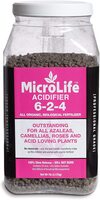
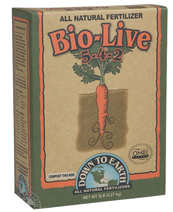
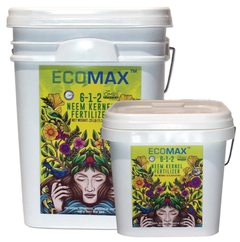
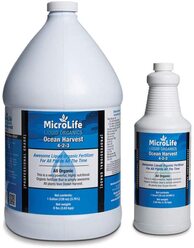
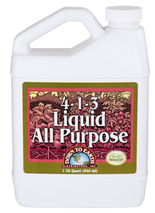
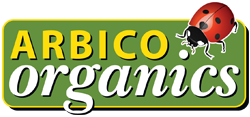
 RSS Feed
RSS Feed